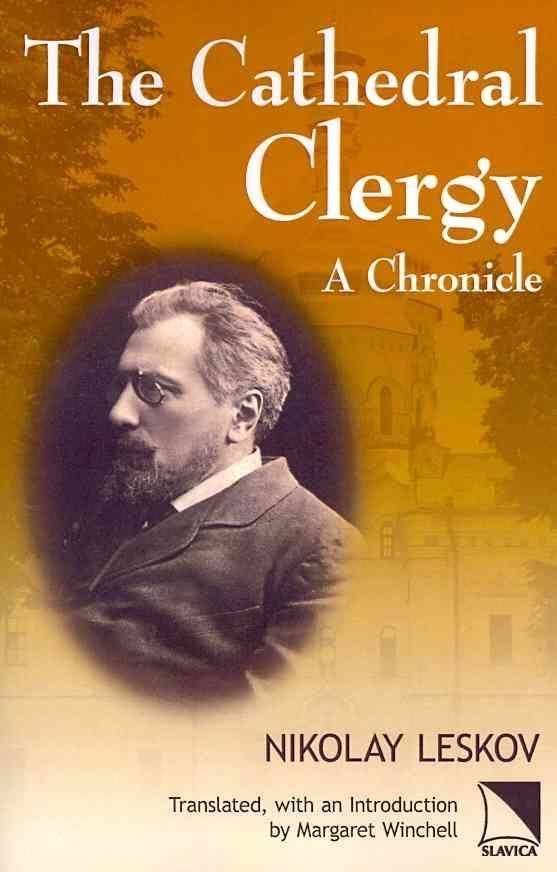Original title Соборяне Genre Romantic chronicles Originally published 1872 Preceded by At Daggers Drawn Country Russia | Language Russian Publication date 1872 Publisher The Russian Messenger | |
 | ||
Media type Print (Paperback & Hardback) Similar Works by Nikolai Leskov, Classical Studies books | ||
The Cathedral Clergy (Соборяне, Sobory′ane), also translated as Cathedral Folk, is a novel by Nikolai Leskov, a series of "romantic chronicles" (as the author called them) of the imaginary town of Stargorod. It was first published in Nos.4-7 1872 issues of The Russian Messenger magazine and formed a trilogy with Old Years in Plodomasovo (1869) and A Decayed Family (1874).
Contents
Background
Leskov started working on his "romantic chronicles" in January 1866. In 1867, Book 1 appeared in issues 6–8 (March–April) of Otechestvennye Zapiski under the original title of Waiting for the Moving of the Water. The Romantic Chronicles (Чающие движения воды. Романтическая хроника). Publication was then stopped after a row between Leskov and Andrey Krayevsky over the cuts that had been made. Then Literaturnaya Biblioteka started publishing the novel from the beginning, in its first two issues of 1868 (as Dwellers in God's House. Chapters from the Unfinished Novel), but the journal ceased publication after the February issue. Only in 1872 did The Russian Messenger publish the full text of a revised version of the novel as The Cathedral Clergy.
In its original version (the one published in Otechestvennye Zapiski), the novel dealt more with the life of Stargorod in general, focusing on its starovery community with its problems and altercations, but also describing in detail the ordinary, non-religious people's spiritual leanings. Book I, therefore, looked more like background for the story of Savely Tuberozov, the novel's main character. In the Russian Messenger version, most of the side plots, which had little to do with protopope Tuberozov and his colleagues, have been cut. Konstantin Pizonsky and Platonida, who featured prominently in the chronicles, disappeared from the latter version and resurfaced as the main characters of the short story "Kotin the He-Cow and Platonida," which was included in the collection Novelets and Short Stories by M. Stebnitsky (Vol.1, 1867).
Synopsis
Priest Savely Tuberozov, a spiritual leader of a small Russian Orthodox community (sobor) in a provincial town of Stargorod, who firmly believes in his spiritual and social mission, but not in making compromises of any kind, comes into conflict with his church seniors and the local authorities. The latter expect him to "eradicate raskol" (schism), and report to them on dissenters, he refuses to comply and criticizes instead the destruction of the Old Believers' church as barbarism. As the Governor comes to town, Tuberozov pronounces the speech complaining of local masters exploiting peasants, making them work on Sundays and religious holidays, as well as the devastation of the local rural areas. The Governor doesn't want to listen, and protopope Tuberozov, reprimanded for such an audacity, gets demoted in ranks. His mission ends after he summons the whole of the local authority figures to a moleben and preaches a sermon which sounds more like a political speech, promising dire things to leaders who treat their people in an inhuman way. Tuberozov gets fired, goes through numerous humiliations, falls ill and dies.
